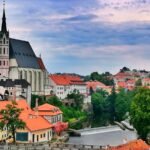For many people, Slovakia still evokes memories of “Czechoslovakia,” a once-familiar name with a historical ring to it. However, those born after 1995 may find this name less familiar. In 1993, Czechoslovakia peacefully dissolved, giving rise to two sovereign countries: the Czech Republic and Slovakia. While the Czech Republic has remained in the spotlight, Slovakia tends to keep a lower profile, and its capital, Bratislava, is even more under the radar. Though low-key, its name can be a bit tricky to pronounce: Bratislava.
The peaceful separation between the two nations piqued my curiosity about their relationship today. A local friend explained it humorously: “Let’s put it this way—if Slovakia plays a soccer match against the Czech Republic, we’ll obviously support Slovakia. But if the Czech Republic plays against any other team, we’ll be cheering for the Czechs!”
This friendly sentiment reflects the strong cultural and linguistic ties between the two countries, and it’s heartening to see how well their people get along after the split.

My connection with Bratislava dates back to four years ago. At the time, I was traveling in Vienna, and while checking the map, I was surprised to discover just how close the two capitals are. I initially planned to take a short train ride from Vienna to Bratislava for a quick visit, with both my accommodation and train ticket booked. However, since I was still new to traveling back then, I let someone’s advice dissuade me from going, and I ended up canceling the trip.
A lot has changed since then. Now, with plenty of travel experience across Central and Eastern Europe under my belt, my understanding of these countries has deepened considerably. I’ve always felt a bit of regret for missing the chance to explore Bratislava, a lesser-known capital I had no real concept of at the time. So, when the opportunity came to travel to Poland, I decided to take a detour and finally see what this hidden gem has to offer.
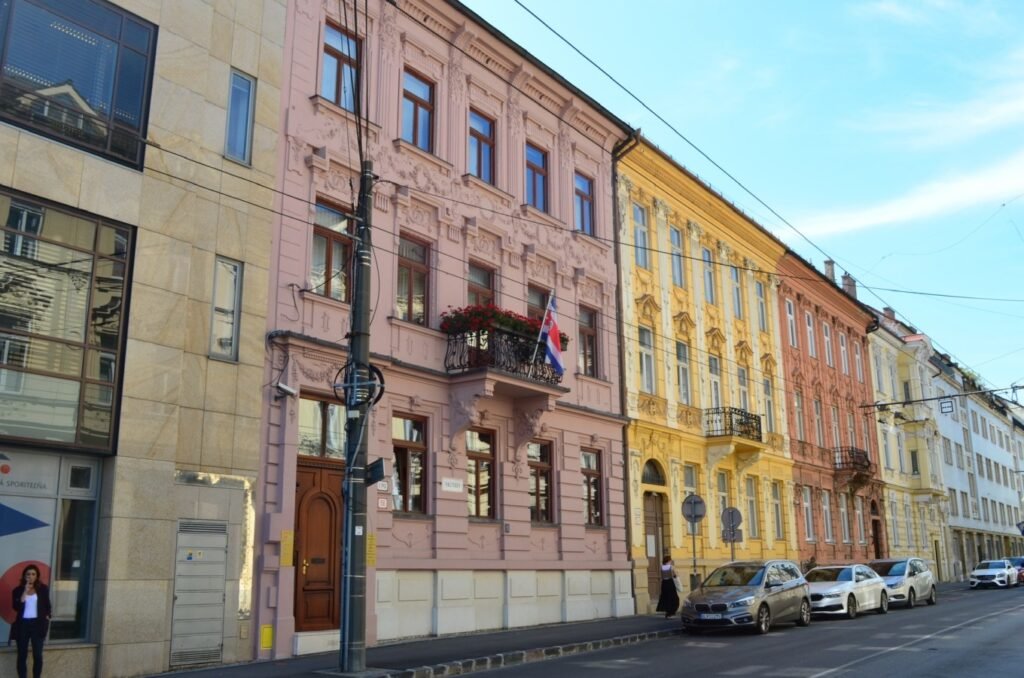
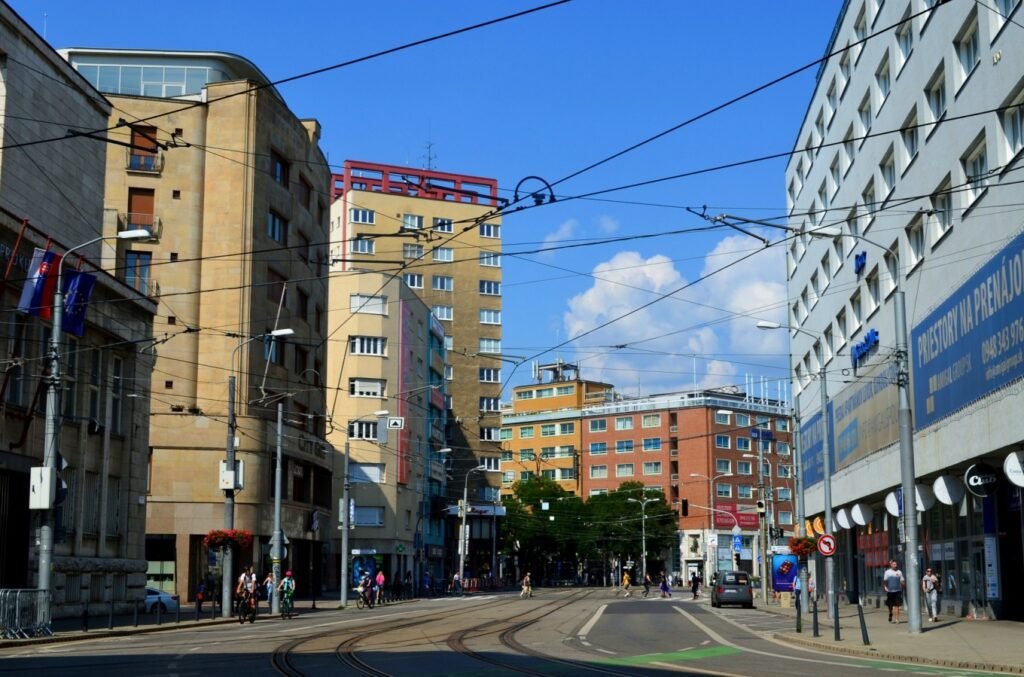
The Origin of Bratislava’s Name
Bratislava, located on the banks of the Danube River, is the capital of Slovakia. As the largest city in the country and its economic, political, and cultural center, Bratislava is home to about 440,000 people. The city uniquely borders both Austria and Hungary, making it the only capital in the world to share borders with two sovereign countries. Vienna, the capital of Austria, lies just 60 kilometers away, and the train ride between the two capitals takes only about an hour.
The train connecting Vienna and Bratislava is comfortable, convenient, and frequent. Since both countries are part of the Schengen Area, traveling between them feels more like a long-distance tram ride than an international journey.
Due to its strategic location, Bratislava has been influenced and ruled by various powers throughout history, including Hungary, Austria, Germany, the Czechs, and Jewish communities. From 1536 to 1783, it served as the capital of the Kingdom of Hungary, and for centuries it was known by its German name, Preßburg. It wasn’t until 1919 that the city was officially renamed Bratislava.
There are many theories about the origin of the name Bratislava. The most accepted explanation is that Pavel Jozef Šafárik, a Slovak ethnographer working under the Hungarian kingdom, mistakenly translated “Braslav” into “Bratislav,” which eventually gave rise to the modern name Bratislava.
While many European capitals conjure iconic images—like the Eiffel Tower in Paris, the Colosseum in Rome, the Parthenon in Athens, the Brandenburg Gate in Berlin, or the Vltava River in Prague—Bratislava remains elusive. For most people, even pronouncing its name correctly can be a challenge, and Slovakia itself may not spark many immediate associations. Perhaps it is this understated nature that makes Bratislava feel so mysterious and intriguing, drawing me to pursue it and finally uncover its hidden charm.
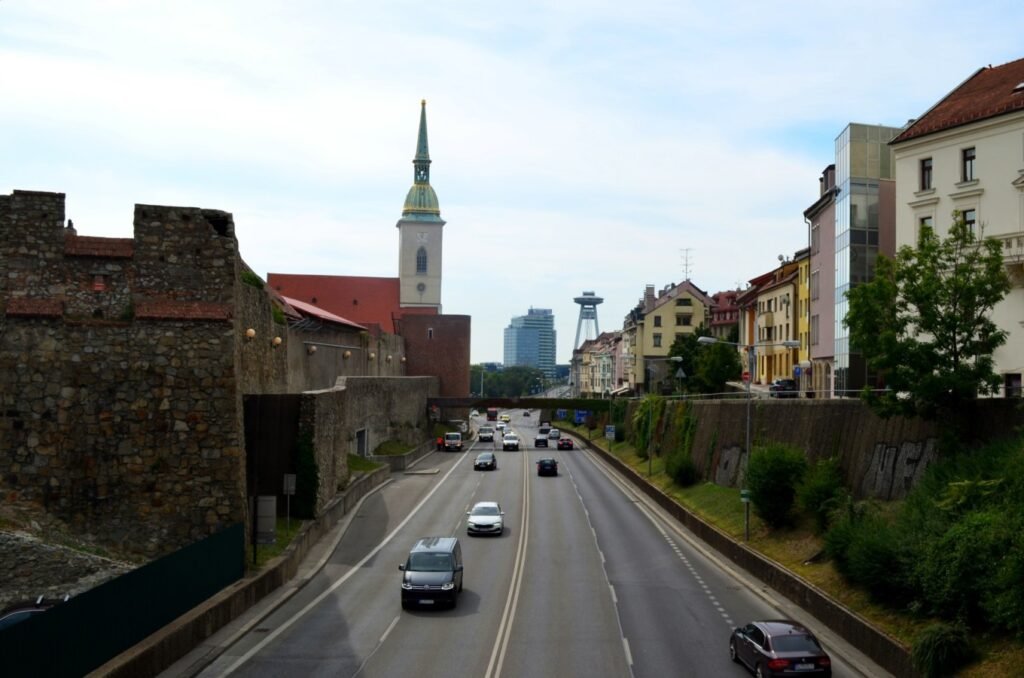
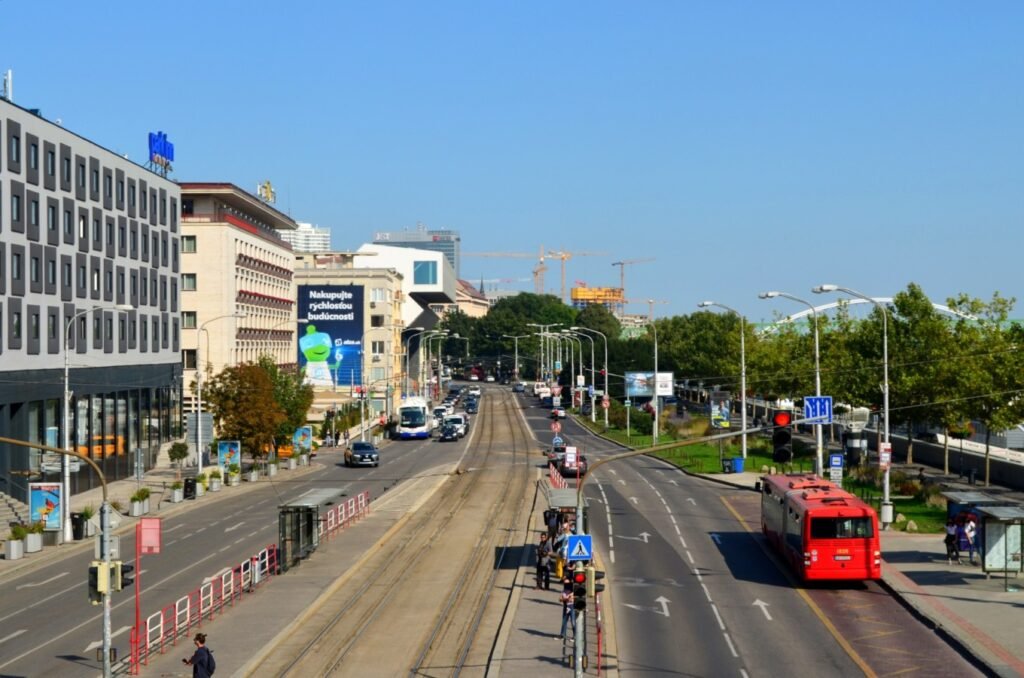
Brass Sculptures: Humor in the Streets of Bratislava
The Old Town of Bratislava is compact enough to explore on foot in just a couple of hours. Along its streets, you’ll find plenty of restaurants, cafes, and souvenir shops, showing how well the city has mastered the art of hosting tourists. When your feet get tired, it’s easy to pop into a cafe for a rest. I was pleasantly surprised by the quality—some cafes serve excellent coffee and desserts that aren’t overwhelmingly sweet, which, in my book, is the highest compliment a dessert can get.
The city’s most famous sculpture isn’t easy to spot—you’ll have to look down to find it. It’s a quirky bronze statue of a sewer worker poking his head out of a manhole, casually watching passersby. This cheerful figure is named Čumil. As with many pieces of art, there are different interpretations of what Čumil represents—some say he’s hard at work, others see him as an observer or a guardian of the city. His purpose, however, remains open to interpretation.
Some say Čumil is taking a break from work, enjoying the street’s lively scene. Others believe he’s basking in satisfaction after finishing a tough job. And, of course, there’s the cheeky theory that he might be sneaking a glance up women’s skirts—a playful thought that would surely wipe the smile off his face if he ever heard it! Regardless of the story you prefer, Čumil brings a touch of humor and relaxation to the Old Town, adding charm to the streets he watches over.
Čumil has become one of the city’s most beloved landmarks, with visitors flocking to take photos with him. Like many famous statues, people have assigned Čumil a bit of magical power—rubbing his head is said to bring good luck, while touching his nose supposedly brings good fortune for fertility. Judging by the shine on his helmet and nose, it’s clear that plenty of visitors, half in jest, have tried to claim some of Čumil’s luck.
Through this whimsical figure, Bratislava offers more than just history—it adds humor and lightheartedness, inviting everyone to enjoy the city with a smile.
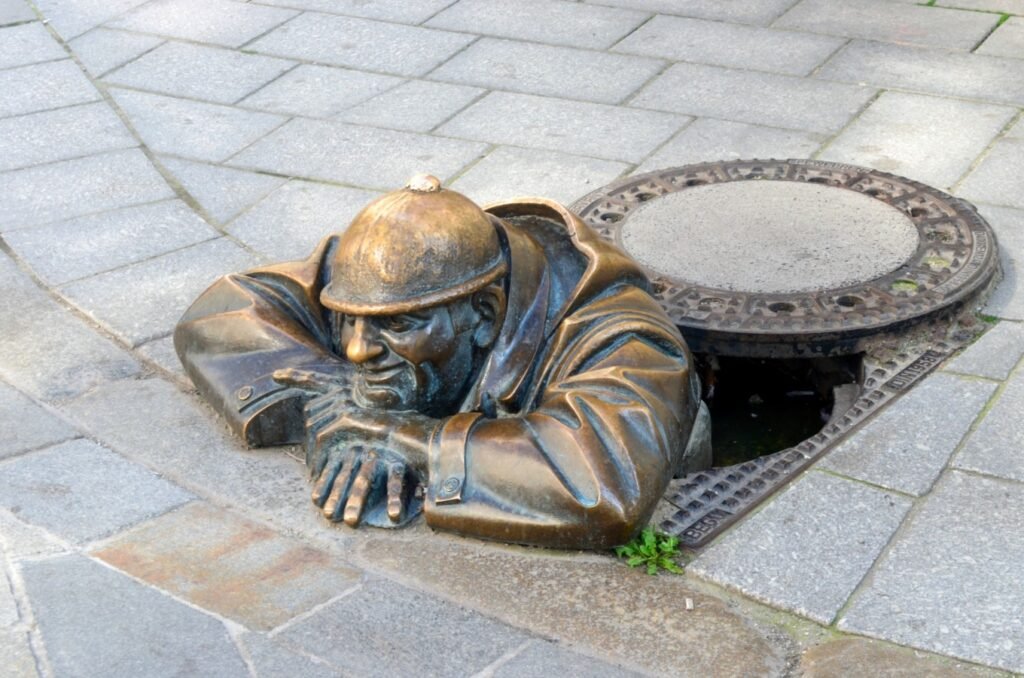
Schöner Náci (often translated as “Mr. Nice”) carries joy tinged with sadness—it is based on a real person named Ignác Lamár, born in 1897 in Petržalka (now Bratislava’s largest district, but part of Hungary at the time). His father was a shoemaker, and his grandfather a famous clown. Lamár lived a poor life but dreamed of bringing joy to others, just like his grandfather.
He would dress in a suit and greet passersby on the streets of Bratislava’s Old Town. When meeting women, he’d say, in German, Hungarian, and Slovak, “May I kiss your hand?” He lived off donations and occasional cleaning jobs, eventually passing away from tuberculosis in 1967, buried in Lehnice (now part of Slovakia, but under Czech territory at the time).
Thirty years later, Bratislava reinterred him and erected a statue in his honor to commemorate the joy he brought to the city’s streets.
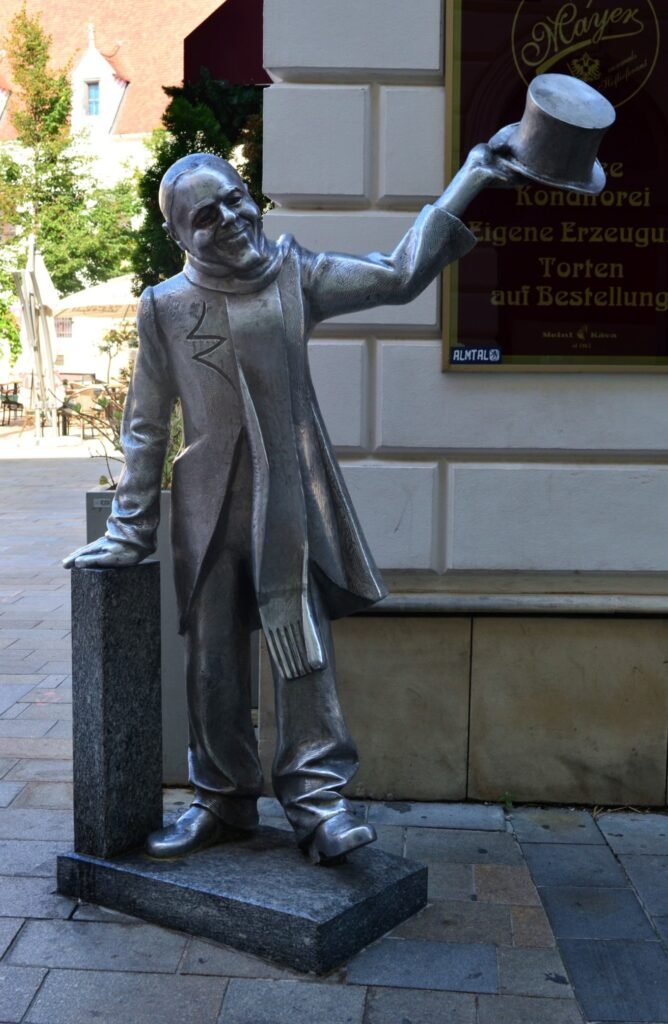
In addition to these two famous statues, visitors will also encounter Napoleon’s Soldier, a sneaky Paparazzi with a camera, and Hans Christian Andersen—who is said to have made a brief mention praising Bratislava in one of his works.
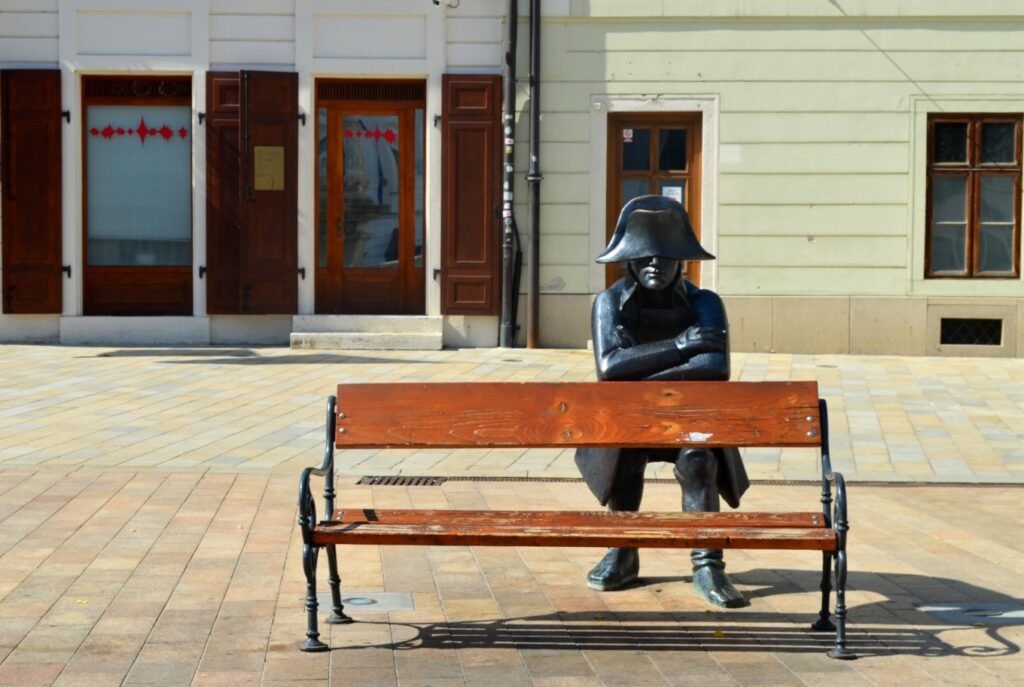
Blue Church
Churches are everywhere in Europe, but this is the first time I’ve encountered one that stands out for its refreshing color.
The Church of St. Elizabeth (Kostol svätej Alžbety), commonly known as the Blue Church, is a Catholic church located in the eastern part of Bratislava. Built between 1908 and 1913, it was originally just a modest chapel belonging to a nearby school. However, in recent years, it has gone viral thanks to its charming color, becoming a popular spot for visitors.
The entire exterior of the church is primarily painted in blue, with some white accents. The shade of blue resembles a soft, pastel “baby blue”, giving the building the appearance of a sweet, delicate macaron, evoking a fairytale-like atmosphere filled with whimsy and romance.
Many visitors wonder why the church is blue, but there isn’t a deep story behind it. The color was chosen almost accidentally—at one point, a bishop decided to paint a small section of the church with this blue color. Pleased with the effect, he gradually expanded it until the entire church was covered. Little did he know that his spontaneous decision would turn this once-obscure chapel into one of Bratislava’s most popular attractions decades later.


A Bridge over the Danube
Having visited the Danube in several countries, I’ve come to understand the saying: art draws from life but elevates it. I still remember my first encounter with the Danube in Austria. When I confirmed that the not-so-wide, slightly murky river before me was indeed the legendary Danube, the disappointment I felt was comparable to a child realizing for the first time that Santa Claus isn’t real.
Later, I heard a joke somewhere: “The Danube isn’t blue—it’s just that you haven’t had enough to drink.” In reality, the Danube is such a vast river, flowing through so many countries, that every stretch we see is only a part of its whole. Music, photography, and literature have imbued the river with romanticism, shaping the idealized version we carry in our minds.
By the time I reached Bratislava’s section of the Danube, I had already abandoned the notion of expecting it to be “blue.” However, the Danube in Bratislava stands out for a different reason—a remarkable bridge that sets it apart from other parts of the river.
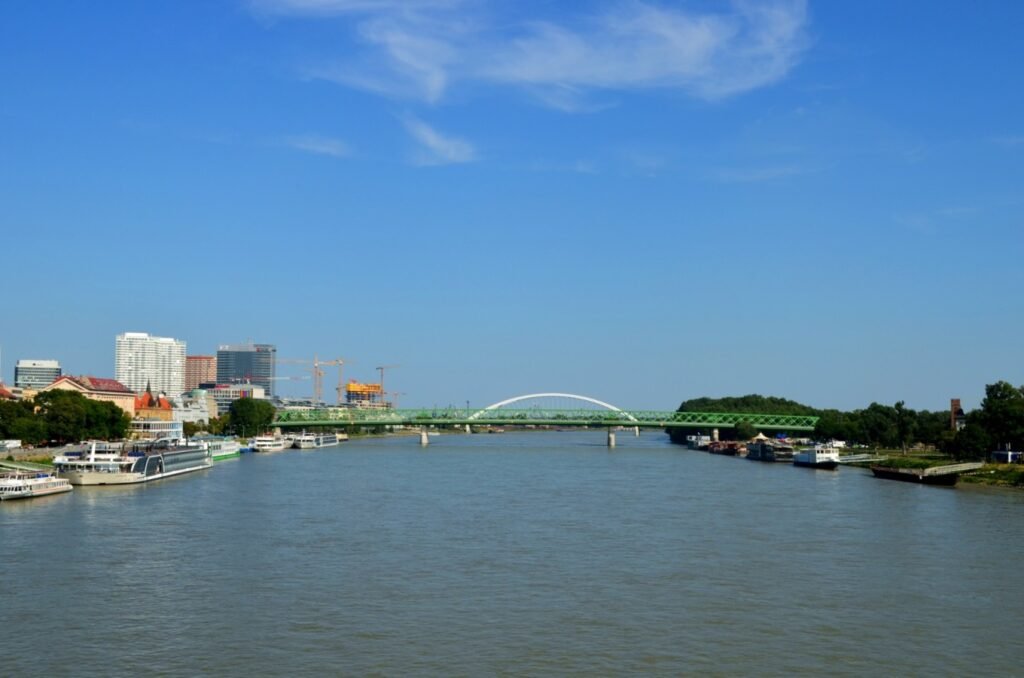

The bridge was constructed between 1967 and 1972, originally named MOST SNP (Most Slovenského Národného Povstania), meaning the Bridge of the Slovak National Uprising. In 1993, it was renamed the New Bridge, only to be changed back to Slovak National Uprising Bridge in 2012 on the 68th anniversary of the uprising. This cable-stayed bridge spans 430.8 meters in length and 21 meters in width. It has become one of Slovakia’s landmark structures, fostering the connection between Petržalka—Bratislava’s largest district—and other parts of the city.
However, building the bridge came at a cost, as the construction required the demolition of a nearby synagogue, which remains a controversial and regrettable part of the bridge’s history.
Locally, the bridge is also known as the UFO Bridge due to its 84.6-meter-tall observation deck, which resembles a flying saucer. Today, this “UFO” houses a restaurant offering traditional Slovak dishes along with some international options. Although the prices are on the higher side, the unparalleled panoramic view of Bratislava continues to draw many visitors.
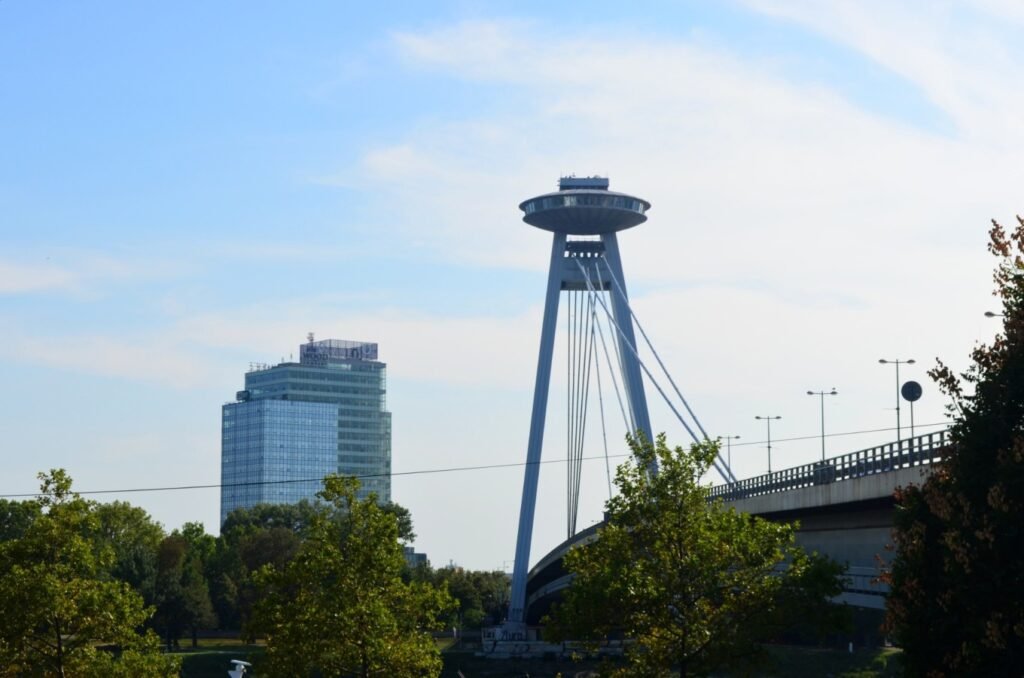
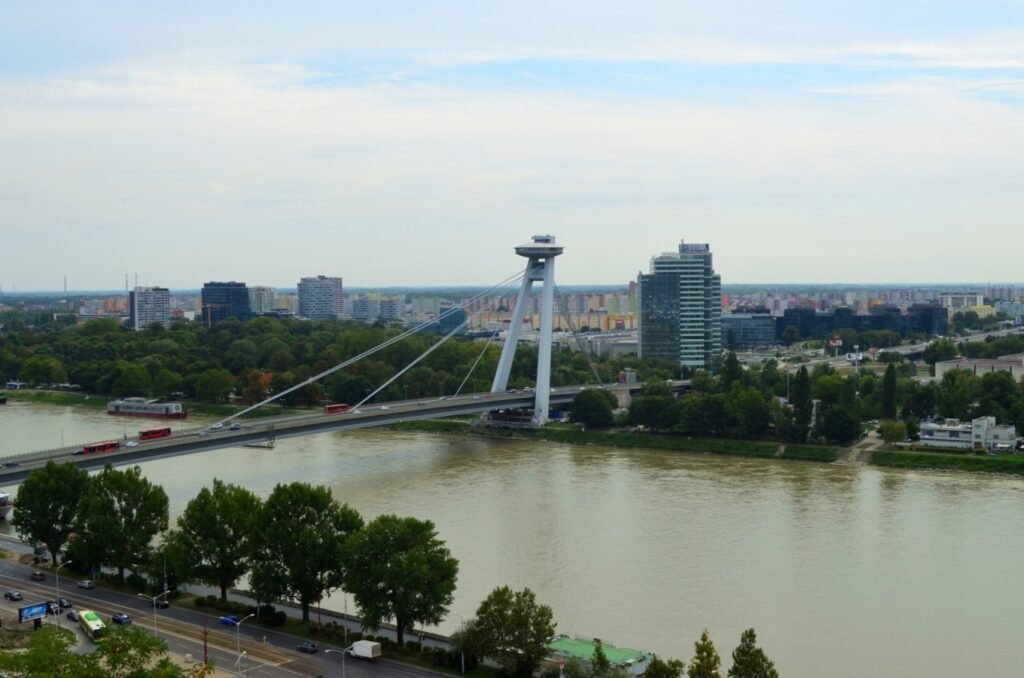
At the same time, it is also the seventh-largest suspension bridge in the world. On both sides of the bridge, pedestrian walkways allow people to enjoy views of the Danube and its riverbanks as they walk. However, after walking for a while, I did feel a bit nervous—the cars rushing by created vibrations underfoot, and beneath me lay the Danube River. Although it’s a rare experience to stand above the Danube, the shaking of the bridge, the roar of passing vehicles, and the sensation of being suspended above the water made my heart race.

Unique Architecture
Due to historical, political, and geographical influences, Bratislava features some buildings with a Soviet-era aesthetic, creating an intriguing cityscape: part Baroque, part Soviet-style.
In addition to the UFO on the MOST SNP Bridge, Bratislava has several other distinctive buildings, each with stories reflecting the city’s changing history. One such example is the Slovak Radio Building, constructed between 1967 and 1983. This building resembles an inverted pyramid and must have been quite eye-catching at the time, showcasing the avant-garde style typical of that era.
Although the building is still in use today, it bears signs of its age—many parts of the ground floor could use updates and repairs. However, its technical facilities are said to be quite decent, and it is sometimes used to record Olympic anthems.
What truly propelled the Slovak Radio Building into the spotlight, however, was a controversial recognition. In May 2017, the renowned architecture magazine Architectural Digest listed it among the world’s 24 ugliest buildings. While the building has never been particularly beloved by locals, many residents felt defensive about the label, insisting, “We think it looks beautiful!”

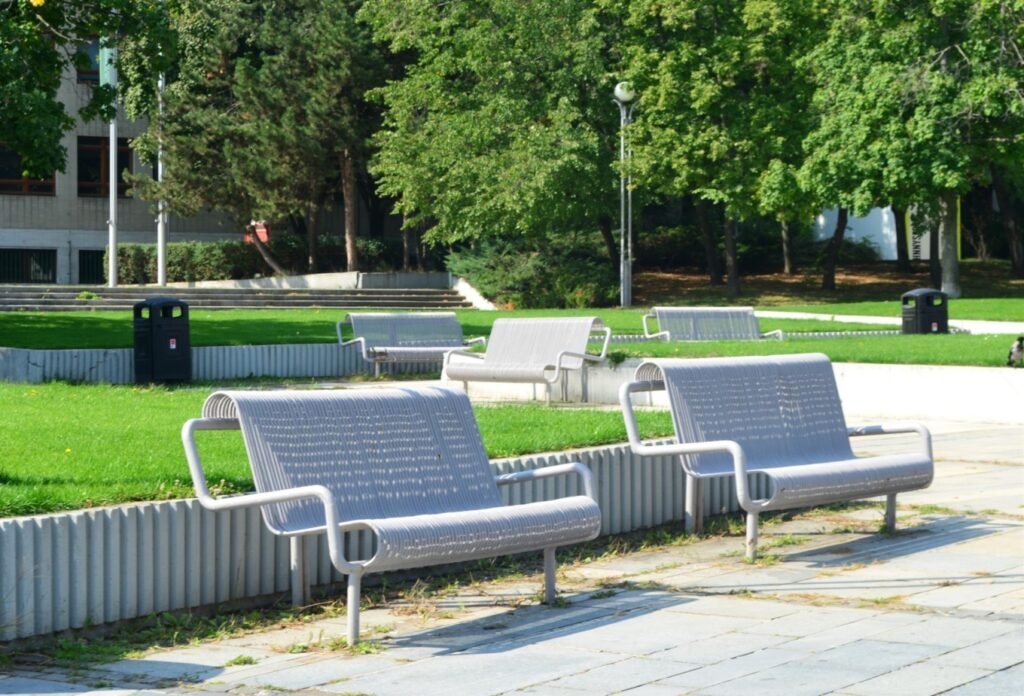
Not far from there lies Freedom Square, a site rich with the era’s history. During the socialist period, it was known as Gottwaldovo Square, named after Klement Gottwald, the leader of Czechoslovakia. At the time, the square also featured a statue of Gottwald.
The most striking feature of the square is a massive fountain, built between 1979 and 1980, which was once the largest fountain in the country. Back in the day, it must have been quite the spectacle—rumor has it that when the fountain was running, the sound was so loud it could be heard from a distance.
Unfortunately, with the collapse of the Soviet Union and shifting political circumstances, the square fell into disrepair. The fountain’s components were damaged over time, and it can no longer function, now standing as little more than a massive, cumbersome ornament. Covered in graffiti and signs of decay, the abandoned fountain and neglected park exude a sense of “faded grandeur”, blending desolation with the remnants of former splendor.
Like many countries in Central and Eastern Europe, Slovakia also has a chapter of history connected to the Jewish people. Bratislava was once a major center of Jewish life, home to 15,000 Jews, accounting for about 10% of the city’s population. However, the Jewish community could not escape the horrors of the Nazi regime. While the city has since restored its reputation, today it is said that only around 900 Jewish residents remain in Bratislava.
The Michael’s Gate and Tower is the tallest structure in Bratislava’s Old Town, originally built in 1300. It is the only remaining city gate from the medieval fortifications. Due to the wars over the centuries, the gate we see today is a reconstruction. During my visit, both the gate and tower were undergoing maintenance and repairs.
Next to the gate, there is a hidden gem—a tiny shop tucked away so discreetly that it is said to be among the narrowest buildings in Europe. Currently, it houses a kebab shop, adding a modern twist to the historic surroundings.
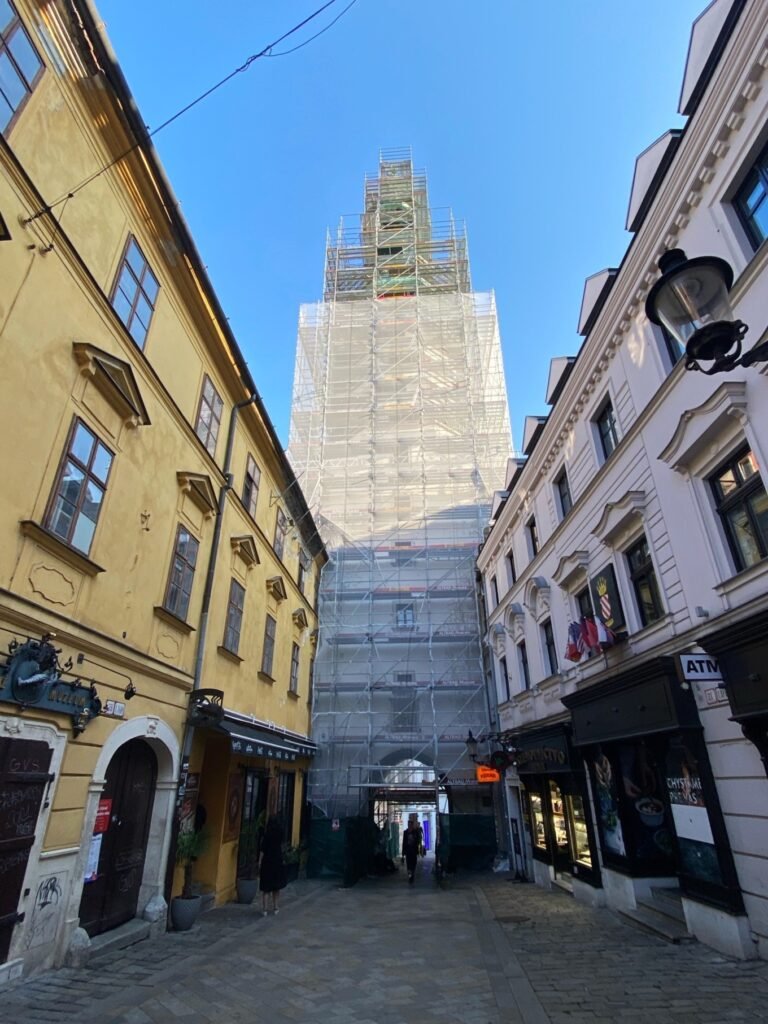
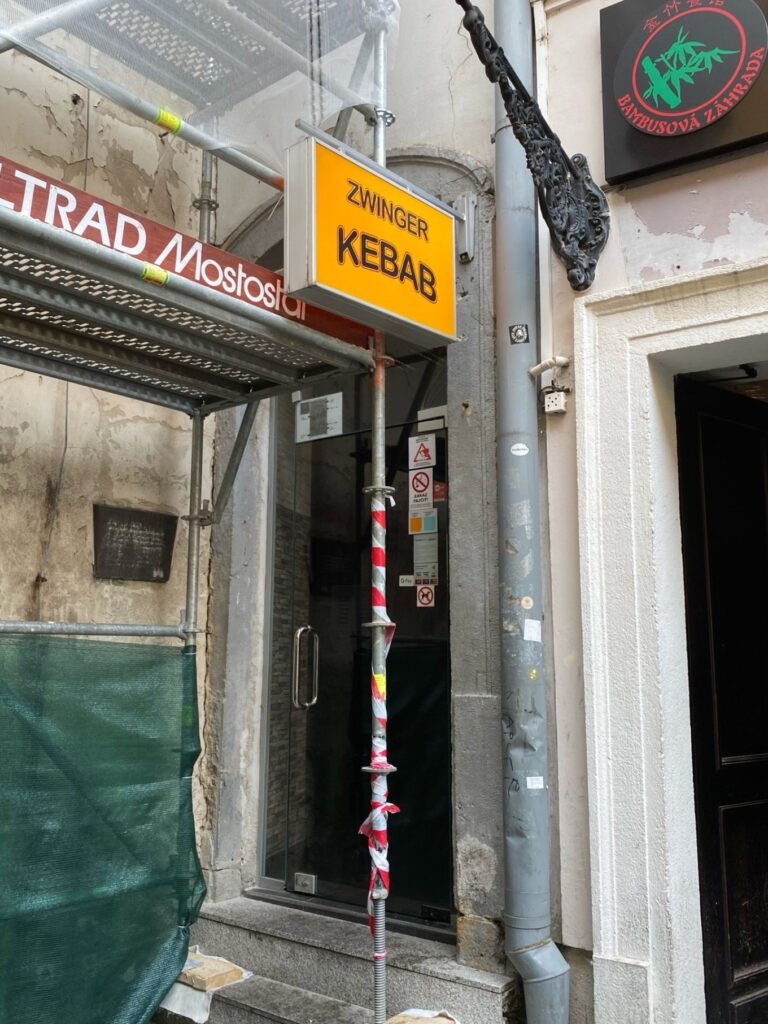
Calling for Peace
Near the city center lies a hill called Slavín, the highest point in Bratislava and a well-known attraction. The path leading up is smooth, with pleasant scenery and lush greenery along the way. On both sides of the road are houses and villas, many of which proudly display bronze plaques and national flags, as this area also serves as the embassy district of the capital.
As you near the top, the view opens up, and from a distance, you can spot a tall obelisk—the Slavín Soviet War Memorial and Cemetery. This site honors the Soviet soldiers who gave their lives in the spring of 1945 during the liberation of Bratislava and western Slovakia.
The memorial and cemetery were built between 1957 and 1960 and officially opened on April 3, 1960, marking the 15th anniversary of Bratislava’s liberation. The obelisk stands 37 meters tall, topped with a 7-meter statue of a Soviet soldier triumphantly holding an anti-fascist flag.
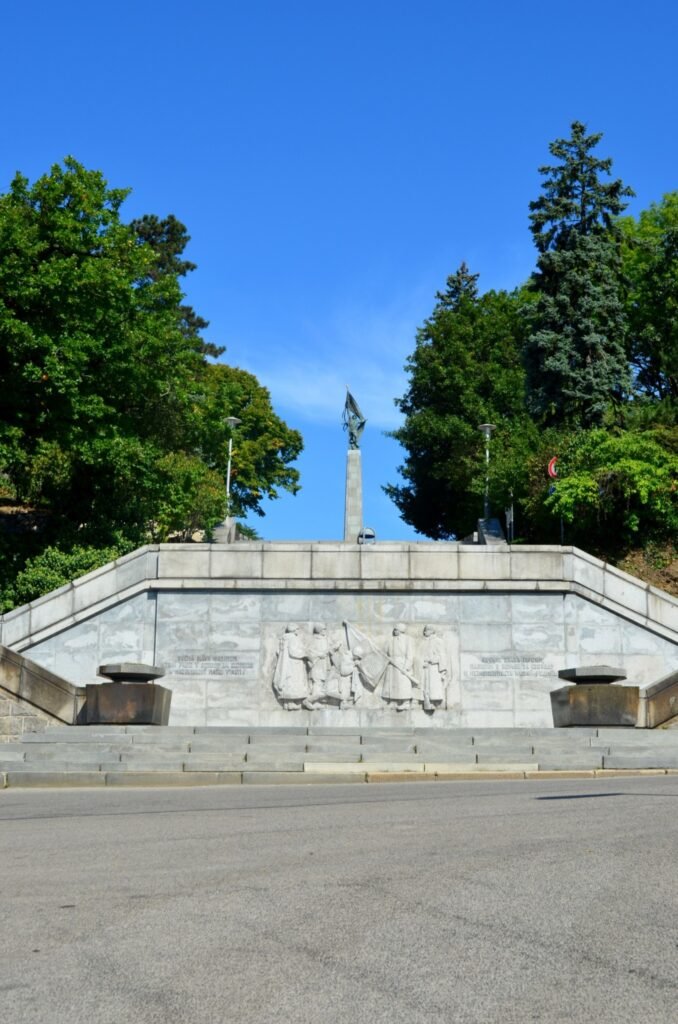
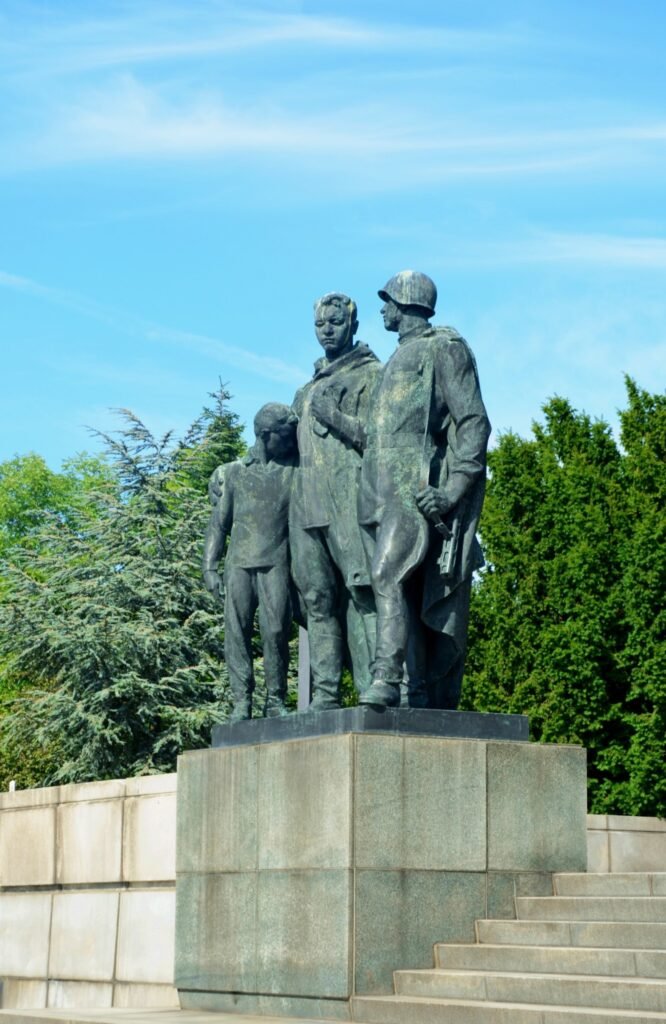
Around the memorial, several sculptures stand firm and solemn, exuding strength and dignity. In this expansive area, there are six mass graves and 317 individual graves, collectively honoring 6,845 Soviet soldiers who lost their lives.
Rows of black marble headstones are arranged neatly, each inscribed with the names of fallen soldiers, along with their birth and death dates. Some headstones bear photographs, though others are worn, displaying only faint dates. The inscriptions on the mass graves are even less specific.
Walking among these graves, the harsh realities of war become deeply palpable. Each silent headstone represents a life once vibrant, most born in the early 20th century, with their lives abruptly ending in 1945. The youngest soldier was only 17 years old, and many lived through World War I only to perish in World War II. It’s a deeply moving sight that stirs profound emotions.
The Slavín Soviet War Memorial and Cemetery is one of the largest Soviet war memorials in Europe. It serves as a site for many dignitaries to pay their respects and lay wreaths in honor of the fallen soldiers. Every year, in early April, on the anniversary of Bratislava’s liberation, the Slovak president and citizens gather here to participate in commemorative events.
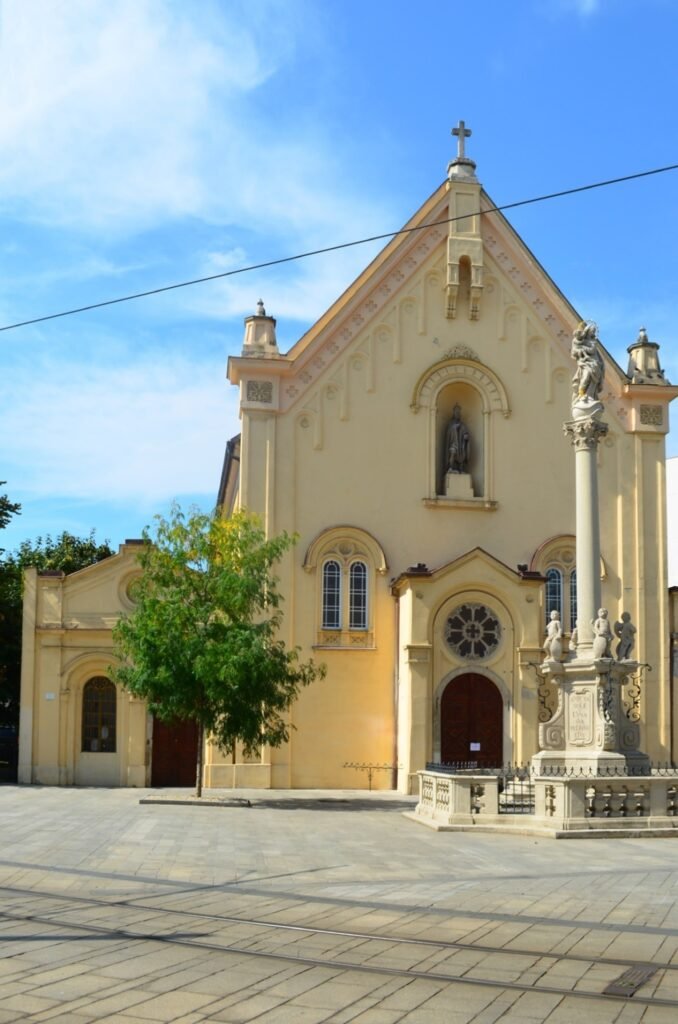
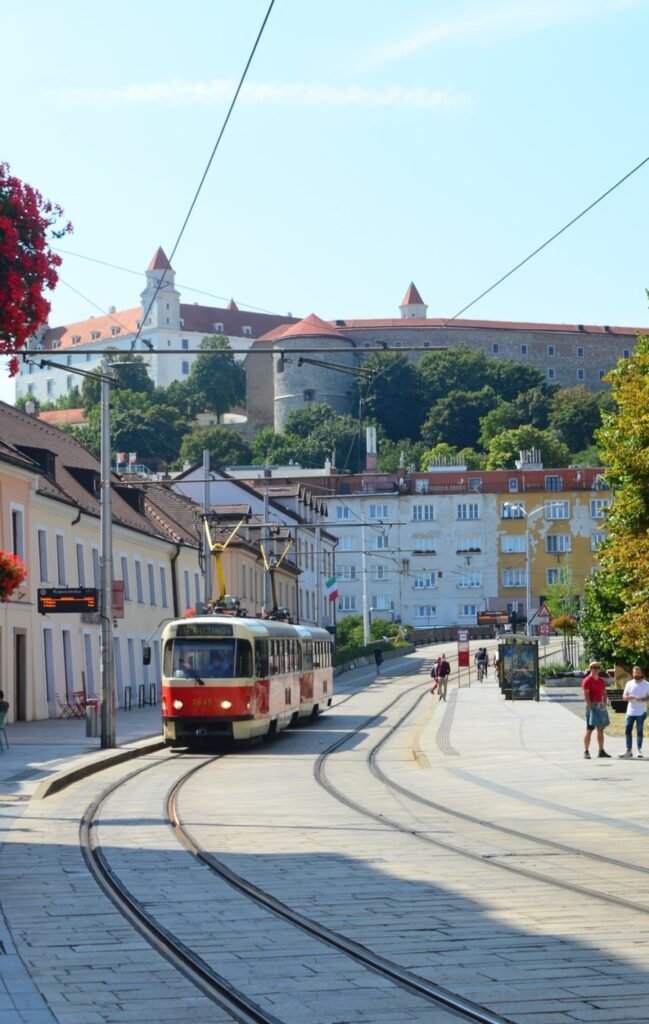
Old Town Castle
Returning to the Old Town, I found myself once again surrounded by bustling, lively scenes. After reflecting on the blood-soaked history I had encountered, I felt a deeper sense of gratitude for the peace and tranquility of the present. As I strolled through the streets, a castle perched on a hill came into view in the distance. Following the winding path upwards, I gradually approached one of Bratislava’s most important landmarks and tourist attractions.
This hill has a rich history, with evidence of human activity and construction dating back to pre-Roman times. Thanks to its advantageous location, the site was once a strategic stronghold coveted by Celts and Romans, leaving behind coins, artifacts, decorations, and building materials from those eras.
The earliest written records of the castle date back to 907 AD, and on the grounds, visitors can still see the foundations of the Great Moravian Basilica from the 9th century and the Holy Saviour Church from the 11th century. The oldest parts of the current castle date to a 13th-century reconstruction. Over the centuries, the castle underwent numerous renovations, suffered from fires, and sustained war damage, leading to its reconstruction starting in the 1950s.
The castle’s rectangular structure is painted white, with red roofs on top and four towers standing at each corner, giving it the appearance of an upturned table.
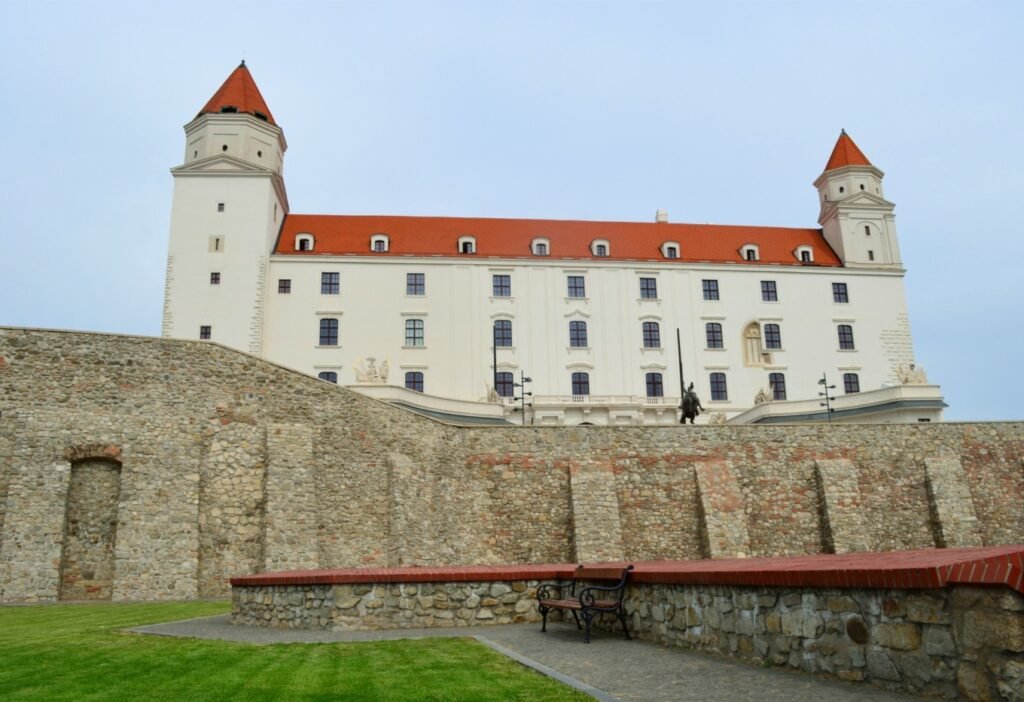

The castle’s intricate carvings reflect the luxurious style of European courts. Bratislava Castle once served as the royal residence of Maria Theresa during the reign of the Kingdom of Hungary. Today, the interior houses the Slovak National Museum and the Slovak Parliament Hall.
The castle offers excellent panoramic views of Bratislava. On clear days, it is even possible to catch glimpses of both Austria and Hungary from this vantage point.

Slovak cuisine is similar to that of many Central European countries, focusing primarily on roasted dishes, with reasonable prices and generously large portions.
Before leaving, I visited a small, locally recommended restaurant that offered authentic Slovak specialties. With great anticipation, I ordered a serving of roasted ribs. The friendly waiter kindly informed me that the ribs are charged by weight, with the smallest portion being 500 grams. Stunned but determined, I nodded in agreement, mentally preparing myself to tackle 500 grams of ribs plus the side dishes on my own.
When the dish arrived, it was indeed a huge portion. However, the ribs were tender and flavorful, and the tomato salad provided a refreshing balance to cut through the richness.
I also tried a local beverage called Kofola, a carbonated drink produced by the Czech company of the same name. Kofola is one of the main competitors to Coca-Cola and Pepsi in this region. Compared to those two, Kofola contains less sugar but more caffeine, making it a popular local alternative.
This is the once-mysterious and hard-to-pronounce Bratislava, a low-key city with unique stories of its own.
As a capital, it may not boast any breathtaking attractions, but its ordinary presence carries its own significance and value.
Nice to meet you, Bratislava!
Travel Tips (The following recommendations contain no commercial promotions):
Transportation:
The train from Vienna to Bratislava takes about one hour, with very frequent departures. If traveling from Vienna, you can simply buy your ticket at the train station.
I traveled by train from Poland, and the journey from Kraków to Bratislava takes about six hours. The train is comfortable and modern. Since online ticketing isn’t very widespread, I purchased my ticket at Kraków’s train station, and it turned out to be surprisingly cheap—around 10 euros. Be careful not to buy tickets from unofficial websites, as prices can be much higher online. Don’t worry—just head to the train station to get your ticket.
Dining Recommendations:
Bratislava Flag Ship Restaurant
Address: Námestie SNP 8, 811 02 Bratislava
The interior design is very unique—it used to be a theater, making it a truly special place.
Slovak Pub
Address: 62 613, Obchodná, 811 06 Bratislava
The restaurant is spacious and filled with traditional Slovak decorations. There’s even a courtyard where guests can dine.
Souvenirs:
Souvenir shops are everywhere in the Old Town, with a density unmatched by any other European city I’ve visited. The Bratislava fridge magnets are especially beautiful, with a wide variety to choose from—it’s easy to get overwhelmed. Below are a few affordable souvenir shops I found during my walk:
Chocolates Shop Tea & Coffee
Address: Panská 239, 811 01 Bratislava
Souvenirs Klarisky
Address: Klariská 324/6, 811 03 Staré Mesto

